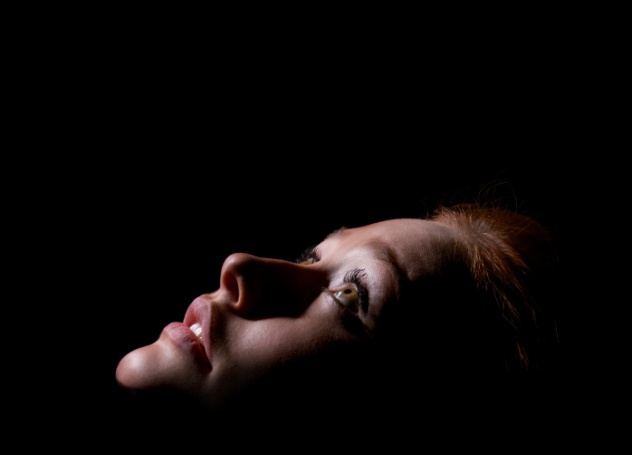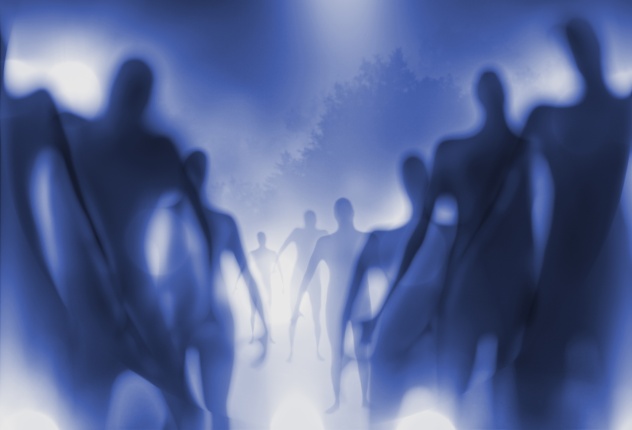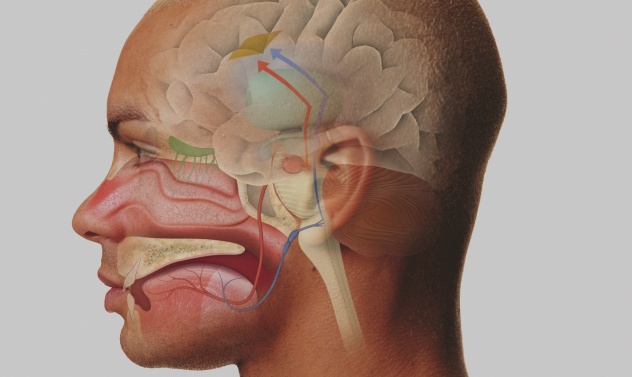 Travel
Travel  Travel
Travel  Miscellaneous
Miscellaneous 10 Intriguing Origins of Popular Sayings
 Facts
Facts 10 Little Known Facts about the Rubik’s Cube
 The Arts
The Arts Top 10 Iconic Musicals That Got Horrible Reviews
 Misconceptions
Misconceptions Ten Unexpected Truths About How Pirates Really Lived
 Health
Health 10 Most Outrageous Workout Trends
 Weird Stuff
Weird Stuff 10 Surprising Things That Were Designed to Stop Evil Behavior
 Movies and TV
Movies and TV Top 10 Ghost Adventures Episodes That Will Haunt You Forever
 Animals
Animals Ten Animals That Produce and Store Toxins in Unlikely Places
 Weird Stuff
Weird Stuff 10 Weird Things That Warp Your Sense of Time
 Travel
Travel Ten Tiny Kansas Towns with Strange Claims to Fame
 Miscellaneous
Miscellaneous 10 Intriguing Origins of Popular Sayings
 Facts
Facts 10 Little Known Facts about the Rubik’s Cube
Who's Behind Listverse?

Jamie Frater
Head Editor
Jamie founded Listverse due to an insatiable desire to share fascinating, obscure, and bizarre facts. He has been a guest speaker on numerous national radio and television stations and is a five time published author.
More About Us The Arts
The Arts Top 10 Iconic Musicals That Got Horrible Reviews
 Misconceptions
Misconceptions Ten Unexpected Truths About How Pirates Really Lived
 Health
Health 10 Most Outrageous Workout Trends
 Weird Stuff
Weird Stuff 10 Surprising Things That Were Designed to Stop Evil Behavior
 Movies and TV
Movies and TV Top 10 Ghost Adventures Episodes That Will Haunt You Forever
 Animals
Animals Ten Animals That Produce and Store Toxins in Unlikely Places
 Weird Stuff
Weird Stuff 10 Weird Things That Warp Your Sense of Time
10 Unsettling Tales Of Sensory Deprivation
According to the song, silence is golden. And it really can be; there are plenty of times when we just want to shut everything out and relax in peace and quiet. But silence isn’t always all it’s cracked up to be, either, and too much silence can drive you mad. It all starts with being able to hear your own organs working, and after about 45 minutes, you’ll start to hallucinate. Silence—and other types of sensory deprivation—can do some weird things to the body and mind. They’re also doing some weird things to the planet, too.
10 Seeing In Complete Darkness

We’re talking about complete, absolute darkness, not the darkness of the average night. Even in the deepest night, there’s usually some kind of ambient light. Even when the power’s out, there’s still light coming in from outside. But researchers from the University of Rochester have found that even in absolute darkness, we still think we see.
Outfitting people with sensors that tracked eye movements and then engulfing them in darkness, they found that about half of us can actually see in the dark. At least, we think we can. Two groups of volunteers were outfitted with what they were told were different types of blindfolds. One was said to allow in a small amount of light, while the other wouldn’t allow them to see anything. In reality, both blindfolds blocked out all light, and when the volunteers were asked to wave their hands in front of their faces, computers tracked their eye movements.
About half of the subjects could track the movement of their hand without hiccups or false starts and stops, suggesting that their eyes actually had something to focus on. That’s because of the connectivity between the brain’s movement and visual centers. When the brain knows that something’s happening, it’s enough to trigger a reaction in the visual centers of the brain—what Vanderbilt University psychologists call a “self-fulfilling prophecy.”
The connection between what the brain expects to see and what the eyes really do see might one day shed light on the weird phenomenon of synesthesia, when stimuli cause a reaction in senses that aren’t impacted in most people, like smelling colors.
9 The Last Dark Places On Earth

Darkness is one of those things that you expect to be all around us all of the time, but to get a true sense of darkness, there are a limited number of places on Earth that you can still go. The International Dark Sky Association keeps track of light pollution and monitors how much darkness you really get in places across the globe, designating the darkest of dark areas as International Dark Sky Places.
Most of the time, we now exist in a sort of sensory overload, rather than sensory deprivation, when it comes to light. Light pollution is everywhere, and it’s a huge problem. It disrupts the circadian rhythms of humans and animals alike, and that alone has an impact which is compounded as you move through an ecosystem.
So where do you go for a complete sensory deprivation from artificial light and light pollution? Dark sky parks and reserves are the best places to go, recognized for their pollution-free dark skies and, consequently, their unprecedented stargazing. Places like the (gold-tier) Dark Sky Reserve on Ireland’s Iveragh Peninsula, the (gold-tier) NamibRand IDSR in Africa, and the (silver-tier) Westhavelland IDSR are among the best locations. There are some communities that are even trying to become darker, like the Dark Sky community on Scotland’s Isle of Coll.
Preserving the darkness might seem like an odd thing, but it’s something that even the UNESCO World Heritage Committee is getting involved with. Until fairly recently, light pollution wasn’t a thing. Generations upon generations of people looked up at the night sky in a way that we’ll never be able to truly experience in many places. The night sky over cities is a sight that we’ll never actually see in our lifetimes, and they’re trying to preserve some of the dark areas that are left and keep them the same way that our ancestors saw them.
8 The Last Quiet Places On Earth

What about the world’s last quiet places? True silence isn’t just the absence of talk; it’s the absence of the background hum of computers, of traffic in the distance, and—one of the most difficult things to get away from—of airplanes. Even the most quiet of sounds, those we don’t even really recognize as sounds, are received and rearranged by our auditory systems and manifest as tinnitus, most scientists agree. One can experience artificial silence in places like Minnesota’s sound deprivation room, but that’s not the same thing as being out in the world and surrounded by silence.
One researcher from Auckland University described his time in Antarctica, and being the only living thing for miles, as primeval. It was a very, very different type of silence than what’s found in a chamber, a silence that has to be experienced to be believed.
But even in Antarctica, those same scientists are adding noise with their remote outposts, weather monitoring equipment, and boats. Planes are regularly routed over remote areas like the Sahara Desert, the North Pole, and Siberia. One ecologist on a quest for a place on Earth untouched by human sounds went deep into the Amazon rainforest, 1,900 km (1,200 miles) from civilization . . . and still came back with recordings of airplanes.
The general consensus is that there’s no place on Earth that you can go and not hear something manmade or artificial fairly regularly. That hasn’t stopped people from trying to declare various places to be pretty quiet, even areas like a natural retreat in Northumberland. These places notwithstanding, it’s now thought that we simply can’t go anywhere anymore without something interrupting us.
7 What Happens When You Stop Talking

So what happens if you suddenly stop providing input to your vocal cords? While there are some conditions that make speech impossible, it’s a different thing entirely to take a vow of silence and simply stop talking.
Perhaps strangely (especially in a world where dedication to a cause knows no bounds, leading some to record every waking moment in their diaries), it doesn’t seem like anyone’s actually made the commitment to test out just what happens when you swear to a lifetime of silence for science. There are theories, though, and they’re pretty fascinating.
One suggestion, from a Los Angeles speech pathologist, is that absolutely nothing would happen, as there are plenty of other things that you use those same muscles for, like breathing or clearing your throat. That’s certainly supported by patients who wake from comas after a long period of time and can still speak.
But there might be some more devastating consequences than just atrophied vocal cords, and the brain could suffer them. Scientists from NYU’s Center for Neural Research suspect that while talking might not be required for keeping your vocal cords from becoming atrophied, it might be helping to keep the same thing from happening to your brain. Certain areas of the brain can become larger or stronger depending on how often they’re used. For example, the area that governs musical ability is larger in a professional musician. The opposite is likely to happen, too. Neurons that control speech would no longer be used, and it’s likely that those neurons would be requisitioned by other parts of the brain to do other things. While that might in part be negated by the parts of the brain that are responsible for the listening part of conversation, it’s also supported by the brain structure and acute listening ability that people who have been blind for a long period of time have developed. The flexibility of the brain means that it’s likely that deciding to stop forcing sensory input into talking would shrink the part of the brain responsible for it.
6 The Terrifying Leningrad Metronome

In 1941, Nazi troops laid siege to Leningrad. It would last for a staggering 872 days, and by the end, nearly one million people would be dead. Some were killed in combat and bombings, while countless people died of starvation waiting for the siege to end.
Descriptions of the conditions within the city are a different kind of sensory deprivation than what comes from inside a water-filled tank. Cold weather and starvation made people even colder, and most public places started to close. Trains stopped, snow filled the streets, and water pipes froze and burst. Freezing, poorly heated apartments became makeshift morgues, and corpses and human waste piled up outside. Those that lived were forced into extreme, despairing isolation. Even gender differences began to fade, along with traditional social roles and identities.
Isolation and deprivation from human contact and normal, everyday lives became greater and greater, and many began to cling to the sounds of their radios. There were fewer and fewer broadcasts as the siege went on, but there was one sound that filled the city of silence, dying people—a metronome.
The Leningrad metronome was played continuously, ticking slowly when all was well. People remembered clinging to the sound as though it were a heartbeat, a reminder that there were other people out there through the loneliness, hunger, pain, and death. The metronome would double in speed when there was an incoming air raid, but when it returned to its normal, steady, 50 beats per minute, it was the maddening sound of resistance and reassurance that even in the most extreme times, people were not alone.
5 John Lilly’s Bizarre Theories

One of the problems with determining just what’s going on with extreme cases of sensory deprivation is an ethical one. How far can you push people before you’re endangering their sanity, and just how much nothingness can the mind recover from? John Lilly started his experiments in 1954, and while he’s perhaps most famous for his odd relationship with dolphins, he also invented the idea of the sensory deprivation tank. Original tanks were a little different than the ones we see today, requiring the wearing of some horrifying blackout masks and total submersion. Gradually, that was adjusted to something a little less terrifying, but listening to Lilly’s claims of his experiences are truly bizarre.
Lilly claimed that absolute sensory deprivation allowed him to come into contact with creatures from another dimension. The tank acted as a portal, allowing him to leave his body behind and enter into a sort of mind meeting with other beings that discussed him as their agent on Earth, whose work was temporarily influenced by what he called “psychoanalysis,” or the process of learning how to remain human while being controlled by, relating to, and doing the work of these otherworldly beings. The entity in control of those beings was called ECCO, or the Earth Coincidence Control Office, and Lilly got to the point where every time he went into the tank, he made contact. He never had an end goal in mind, he said, because that would have been just crazy.
Sensory deprivation and out-of-body experiences (which can also be done with dolphins and apparently allows him to link up with the dolphin hive mind) open the gateway to a whole different sort of reality. Of course, this probably also had something to do with the fact that as a precursor to his experiments, he took LSD and ketamine. It was after doing so that he reported such breakthroughs as getting into a mental state that allowed him to connect with dolphins that were looking beneath the floor to see the stars on the other side of the planet.
4 The Fundamental Strangeness Of Boredom

While sensory deprivation is the lack of external stimuli, boredom is the lack of interesting external stimuli. It turns out that it’s a weirdly complicated thing, too, and even though we’ve tried to measure it in countless ways, it’s still pretty elusive.
Some people are more easily bored than others, and generally, it’s been found that men are bored more often than women. There are a couple of different scales that have been created to try to measure boredom, but they’re all highly debated. One thing that has been noticed by those who study the phenomenon of boredom (yes, that’s a job) is that there are significant similarities between people who are chronically bored and those who have suffered from traumatic brain injuries. When one researcher was working with patients suffering from brain injuries, one of the common questions was to ask them if they felt bored.
Every one said “yes.”
Just what the connection is, however, is still up for debate. That same researcher, from the University of Waterloo in Ontario, suggests that the higher levels of endorphins found in brain injury patients have something to do with elevating the entertainment threshold. Higher levels mean that it takes more to keep their brains occupied and more to supply the stimuli to make the brain happy. These findings indicate a serious potential for finding a major key in overcoming addictions to dangerous behavior, especially things like alcoholism, drug abuse, and gambling.
People who are easily bored are constantly looking for new ways to fight the boredom, and that makes them more likely to turn to risky behaviors in an attempt to make their environments more interesting. Understanding how the brain works in chronically bored people might help us understand addiction better. For instance, if the root cause is elevated levels of endorphins that make a person repeatedly turn to risky behaviors for fun, then we can figure out how to alleviate that pressure to take bigger and bigger risks for the same levels of enjoyment. Teaching addicts how to fill the boredom gap with other, less risky behaviors might also have a huge impact on recovery. According to studies done by methadone clinics, many addicts said they turned to their addiction when they were bored.
There has also been compelling evidence that the more bored you are, the more likely you are to develop health issues. In 1985, British researchers began a study by collecting information on the boredom levels of civil servants. A few decades later, they went back to see if there was a correlation between boredom, health issues, and dying young. There was, suggesting that external stimuli aren’t just keeping us entertained; they’re keeping us alive.
3 Losing Your Sense Of Taste And Smell

Not being able to smell or taste anything is a hugely understudied type of sensory deprivation, which is even more surprising considering how widespread it is. Estimates from smell- and taste-loss charity Fifth Sense suggest that about 5 percent of the population in the United Kingdom alone suffer from an inability to smell. Called anosmia, it means constantly living with a condition that most of us only experience when we have a cold. It can be caused by things like head trauma, frontal lobe damage, or nasal polyps, and the consequences can be life-changing.
The majority of people who can’t smell or taste report chronic feelings of loneliness and isolation. Depression is common, too, and it’s not surprising. Not being able to truly share or understand a good meal or a fine wine with friends and family can be incredibly isolating.
There are also potential health risks associated with not being able to smell. If you lack the ability to perceive potentially dangerous smells like gas, smoke, or spoiled food, you’re likely to spend more time sick from them. Smell is also a major factor in bonding with other people. It’s the experience of a favorite perfume, cologne, or detergent, the association of roses with a birthday, or the making of happy memories. Without a sense of smell to remind us of those memories, it’s no wonder that life can seem pretty one-dimensional.
It’s made even weirder with the fact that an estimated 90 percent of people can overcome the condition with treatment. It’s never been on the top of medical radar, though, in part because of the perception that losing the ability to detect smell is less important than other types of conditions which deprive a person of a sense—like deafness or blindness.
2 Black Patch Delirium

This one’s a bizarrely specific type of disorder brought on by a very specific sort of sensory deprivation. The term “black patch delirium” was coined by Avery Weisman and Thomas Paul Hackett Jr. in 1958, and it describes the mental state of otherwise healthy patients who go through eye surgery and are required to wear eye patches afterward. Visual hallucinations are common and are described as similar to those suffering from another disorder—Charles Bonnet syndrome.
Charles Bonnet syndrome was first described in 1760, diagnosed in Bonnet’s 87-year-old grandfather. Nearly blind, he was nevertheless seeing incredibly complex hallucinations, including people and animals. It was differentiated from other types of hallucinations by the fact that he was otherwise healthy and understood that the hallucinations were not real.
There’s more to the hallucinations with black patch delirium, though. Associated with the sensory deprivation that comes along with the eye patches (and possibly helped along by the medications that might go along with surgery), it was described as being not just hallucinations, but full-blown delirium.
Even today, cataract and other similar surgeries require the removal of bright light and stimulus for recovery, but today’s post-operative eye surgery procedures were developed with prevention of black patch delirium in mind.
1 The Horrible Consequences Of Childhood Deprivation

We all know that neglect and sensory deprivation can be crippling to a child, but any real scientific research on the impact of such an environment is obviously pretty unethical. Sadly, the world has a way of providing, and in 2000, researchers from Harvard, Tulane, and the University of Maryland started working on a study of 136 Romanian children left either in foster care or in government-run orphanages. The comparison allowed them to track just what kind of impact sensory deprivation—especially of touch—has on children.
Under Nicolae Ceausescu, Romanian women were tasked with bearing pretty high numbers of children, and that left about 150,000 of them in state-run institutions that were ill-equipped to deal with so many kids. This meant that babies were left lying in cribs, and one caregiver was in charge of as many as 25 toddlers. In rural facilities, children were simply tied to their beds.
Some stayed there for years.
What they found was horrible. Charles Nelson, pediatric professor at Harvard, talked about the unearthly silence that would greet researchers when they walked into the facilities. Most babies and young children were cross-eyed; with nothing to look at and focus on, their eye muscles didn’t develop. Physical growth was stunted; children that might look like little more than five or six years old were really teenagers. Lack of sensory stimulation led to a lack of growth hormone, and the universally low IQs found in the institutionalized children pointed to environmental causes, not genetic.
Researchers, including Nelson, recruited and trained a group of foster families to see if they could reverse the damage that had been done to the children in their early years of neglect. Over the course of five years, researchers charted the development of the institutionalized children, the children removed to foster care, and another group of children being raised by their own parents.
They found that children who were removed from institutions and exposed to all of the sensory stimuli and care of a regular family recovered fairly quickly, but not completely, and only if they were young enough. While many quickly caught up in terms of things like motor development, sitting, and walking, there were still high rates of things like ADHD, repressed brain activity, and small heads.
For Nelson, that seemed to cement the idea that there are critical ages when children learn some of the basic skills needed throughout life. Suffering sensory deprivation at a young age can, in some cases, be irreversible.








